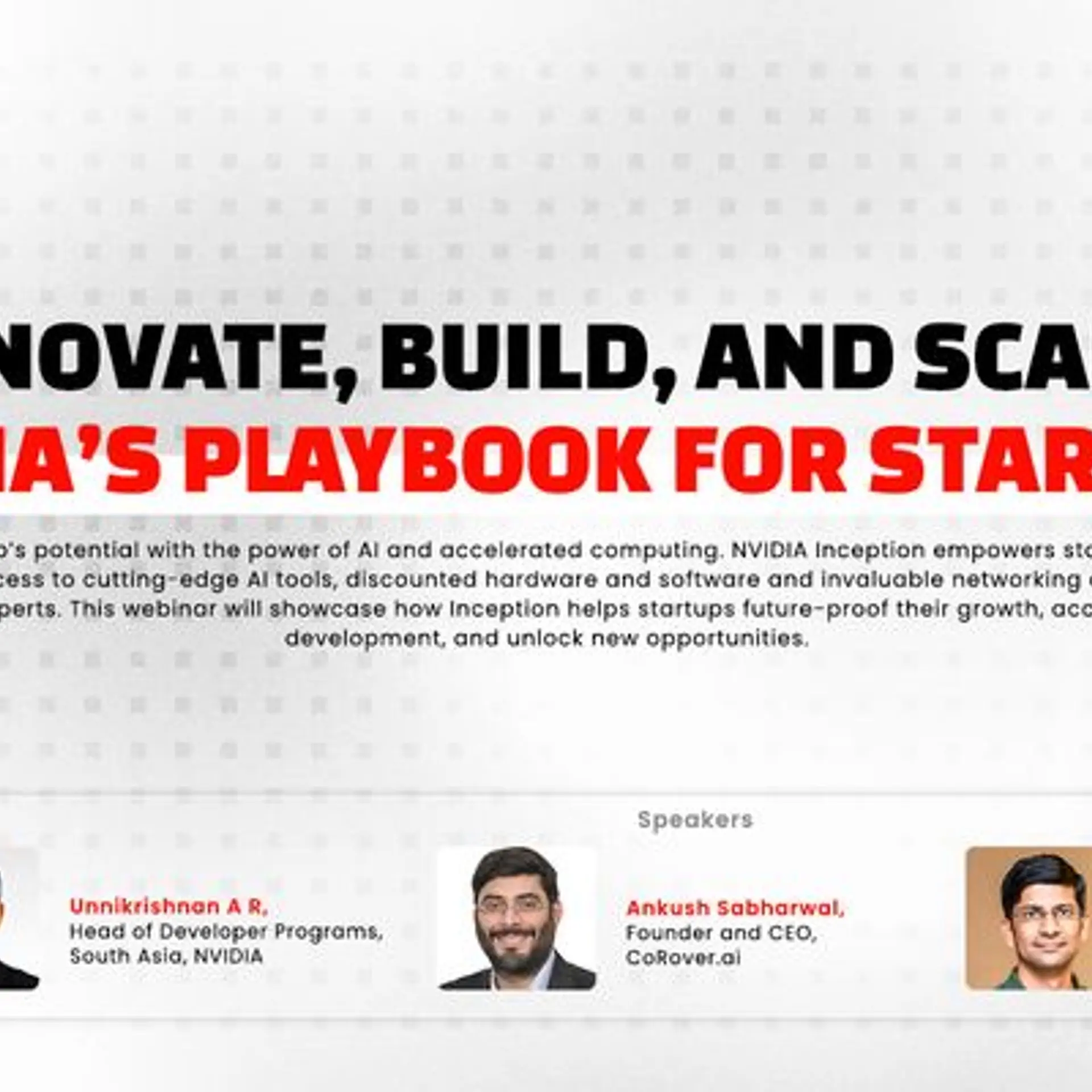From stories to narratives: how innovation calls for new approaches to inspire and engage people
Set the context, inject emotion, and show evidence – these are three steps to craft a compelling narrative about an emerging innovation, as explained in this new book.
Launched in 2012, Book Review section features over 250 titles on creativity, innovation, entrepreneurship, and digital transformation. See also our related columns The Turning Point, Techie Tuesdays, and Storybites.

Founders, innovators, and changemakers need to go beyond the usual approaches to storytelling for influence, according to Michael Margolis, author of Story 10x: Turn the Impossible Into the Inevitable.
While data and logical arguments are important, it is the story and narrative that really brings onboard investors, employees, and business partners. At times of increasing and speedier disruptive innovation, effective communication approaches are needed for achieving breakthroughs.
Michael Margolis is the CEO and Founder of , a strategic messaging firm, specialising in the story of innovation and disruption. He has advised clients across 34 industries and 15 countries, including Google, Hulu, Greenpeace, and NASA.
The book draws on the author’s own experiences as an “outsider,” growing up in Switzerland and then moving to the US. He launched a social enterprise at 22 (CitySkills), which failed two years later. Michael’s other passion project is Choco Libre, a subscription-based community devoted to craft chocolate.
Here are my key takeaways from the 190-page book, summarised in Table 1 (below) as well. See also my reviews of the related books Unleash the Power of Storytelling, Five Stars, Let the Story Do the Work, Whoever Tells the Best Story Wins, Putting Stories to Work, Stories for Work, Stories at Work, and Data Story.
Entrepreneurs should check out YourStory’s Changemaker Story Canvas, a free visualisation tool for startups and innovators, and Pitch Tips for Startups.

I. Communicating about innovation
Change agents communicating innovative ideas and projects need “a new way of thinking, a new vocabulary, a new way of seafaring,” Michael begins. Unfortunately, many world-changing ideas get “lost in translation” as they try to make the impossible inevitable.
Traditional moralistic stories were about preserving the existing order, but today’s storytellers call on us to question and challenge the social order. Thanks to always-on global social media, new ideas are coming from everywhere all the time.
Recent waves of innovation have changed the way people think about and accept emerging products and services, the author explains. These include space travel, shared accommodation, autonomous vehicles, digital media, and robots. What was earlier considered heretical is now becoming undeniable.
Founders and creative teams need to humanise new products, raise large tranches of funds for hyper-growth, and even reframe issues like climate change. All these activities need to be conducted under constraints of time, money, and people.
Transformational storytelling is a force multiplier and helps make the innovator’s vision understandable, relatable, and mobilising for listeners. This calls for systematic approaches to communicating vision, strategy, and approach, Michael emphasises.
“Every great leader is both a storyteller and a magician. The very best leaders are well-versed in the art and science of story,” he writes. Effective communicators can hook the audience within the first few minutes of their sessions. They use the ‘ice-cream cone’ approach to momentum rather than ‘sledgehammer.’
II. Stories – and beyond
Storytelling approaches generally frame the beginning, middle, and end of a story. They capture life lessons in an insightful or entertaining way. Many “backstories” have focussed on the personal stories of iconic leaders, such as Bill Gates dropping out of college to start Microsoft, or Oprah Winfrey overcoming childhood trauma to build a media empire.
“Story is the glue that forms relationships – professional and personal alike,” Michael observes. Effective storytellers express their individual voice, identity, and confidence, and thereby win audience trust.
A good backstory is more than the narrator’s resume. As an origin story, it tears down barriers, shows ownership, and makes the conceptual real and relatable, the author emphasises.
“There’s nothing more seductive than someone who knows who they are,” Michael evocatively explains. “You can’t separate the message from the messenger.”
“The best leaders share stories about themselves,” he emphasises. Only when people know their leader’s stories will they trust them with blind faith. Investors often bet more on the founding team than on their product, as explained by Starbucks’ former CEO Howard Schultz.
But many misconceptions surface when people are urged to tell their own stories. They may not believe they have a story, or that their story is interesting, worthy, and impactful; they fear that they may come across as boastful, or that their story is not perfect and is actually a distraction.
“Whether it’s been easy, or more likely full of struggle and challenges to overcome, there is power in your past,” Michael emphasises. He urges aspiring storytellers to reflect on their childhood, passions, hobbies, challenges, privileges, and defining moments. It is not necessary to reveal deep and dark secrets, the author advises; just the relevant parts and some imperfections or vulnerabilities need to be shared.
They need to overcome perceptions of being an outsider, rebel, maverick, or threat, and avoid making insiders feel they are wrong. Storytelling for business is not about personal catharsis, but to address questions like Who do you think you are?, and What gives you the right?
One chapter in the book traces the neurobiological foundations of storytelling, such as the fight-flight-freeze response to uncomfortable change. “Humans are neurologically hardwired to make sense of the world through story and narrative,” the author explains.
Traditional tales trigger off cortisol (difficulty, drama) followed by oxytocin (happy endings). Effective stories trigger mirror neurons (empathy). It is such emotional activities that lead humans to make decisions based more on feelings than facts, sometimes even irrational decisions. Confirmation bias leads people to even reject contradictory data.
The “feel-good principle” is effective for storytelling, rather than telling people they have a problem, and how you can fix it. “Give people faith in the future,” Michael advises, urging a focus on the aspirational narrative of a better world at times of paradigm shift.
When it comes to communicating about innovation, traditional “moralistic” approaches of right versus wrong just do not cut it, Michael cautions. Challenging people triggers off a defensive and resistive reaction.
It’s one thing to tell likeable stories, but another altogether to inspire action. “Doom and gloom” or oppositional posturing are not always effective in enlisting support for new ideas.
Instead of traditional storytelling, innovators should reframe the impossible as the inevitable, and craft a narrative which itself can have dozens or even millions of stories embedded into its larger transformational arc. There are, after all, endless numbers of stories in the journey of a company or industry, focussing on products, customers, partners, and managers.
This involves going beyond individual anecdotes to craft an aspirational future with connections between the narrator’s and listener’s desires, dilemmas, and supporting data.
III. Narrative
“The key to creating an Undeniable Story — a story your audience cannot resist — is to learn to think in narrative,” the author emphasizes, adding, “A narrative mindset is at the heart of all successful innovation and transformation.”
“In contrast to the story, a narrative is much bigger,” Michael explains. Narratives connect the individual dots of a range of stories at the big-picture level and paint a larger opportunity. They are also related to other disciplines like scenario planning or future forecasting.
A narrative approach combines vision, strategy, and roadmap to the new land of possibility in a convincing manner. It makes the truth, which is self-evident to the innovator, relatable to others. Leaders can deliver a “next-level narrative” that resonates with and unites everyone.
The author lists several impacts of such narrative: getting executive buy-in, raising funds, aligning teams, building a bigger picture for a product roadmap, creating thought leadership, and creating a sense of belonging in high-performance cultures.
“You have to help believe in how this vision is achievable, and why they can (and should) trust you to deliver on it,” Michael emphasises. This calls for personal authenticity — a faith in the future, and humility.
The three steps to crafting an effective narrative are to set the context, inject emotion, and show evidence. The author describes activities for each step, along with tips to make them effective.
(i) Setting the context
Setting the context involves welcoming audiences into a new and exciting world of opportunity, rather than pushing views onto them. It is about getting others to see what you see, developing a hook to engage them early on, showing the connections, and transporting them to the future along with yourself.
Long-term trends and changes in activities should be spelt out and explained, via a convergence of forces. These can include, for example, transformation in consumer expectations about fast delivery, omnichannel retail, healthy food, environmental sustainability, social inclusion, digital communities, and online privacy.
The transformation need not be described in terms of clashes and confrontations (that may turn off audiences), but as a transition from an old phase to a new phase, for example, from transactional to relational connections, from monopoly pricing to democratised pricing.
(ii) Injecting emotion
Emotional elements can be added via a combination of zooming out and in from the macro-story to micro-stories. “Make your customer the hero,” the author advises. Frameworks like customers’ “jobs to be done” help here (see my book review of Clayton Christensen’s work in this regard).
“Emotion is the fuel of every story,” Michael emphasises. Audiences need to feel they belong in the story and identify with the character’s needs and motivations. Adding elements of conflict and suspense imbue a sense of drama.
One shortcoming in the book is a lack of concrete examples that illustrate these principles in action, even given considerations of client confidentiality. There are frequent plugs for the author’s storytelling consulting services, but even the online companion shares only generalised examples.
For example, a certain customer service company came up with a breakthrough message of “scaling empathy in the age of automation,” by using AI at scale. Other broader narratives include the American Dream.
Some of ads contrasted a Mac user with a PC user. Old Spice came up with a new brand voice targeted towards women for its male grooming products. In the world of fiction, Harry Potter is described as a misfit who doesn’t belong. Other movies and TV series have “anti-hero” characters who are cheered on by audiences as they struggle with internal demons and external adversaries.
Though stories often have hero-villain-victim or persecutor-rescuer-victim triangles, narratives are more complex. Typical hero-villain distinctions are not as easy to demarcate in the real world of today. For example, Julian Assange, the Founder of WikiLeaks, is a hero to some and villain to others.
The human persona in many narratives is complex and full of contradictions and paradoxes. The human struggle evokes empathy and connections from the audience, Michael explains.
(iii) The evidence of truth
To overcome the creative tension of disbelief, the narrator must present evidence to support the promise of transformation. The audience wants to know how the story is true, how the narrator is credible, and how they can trust in the promise.
This can be shown via financial data, scientific proof, actual customer profiles, interactions in social media, and white papers. These can show that the narrative is real and indeed possible, the author explains.
IV. Building narrative intelligence
The last chapter provides tips on how organisations can build narrative intelligence. Storytelling should be built as an organisational capability via activities like story sprints. They should be mapped onto the various functions of the company, and executed in steps like story discovery, story design (message maps), and story development (written document, slide deck, video).
Overall narratives should be shared, modified, and reinforced through internal channels like town halls and workshops, as well as rituals and experiences. The author advises that such activities should involve engineers, designers, marketers, senior leaders, and even people with creative skills in poetry and philosophy.
Michael categorises such stories into several types such as vision story (aspiration), product story (meaning), customer story (empathy), origin story (authenticity), investor story (opportunity), brand story (ethos), recruiting story (talent), and culture story (belonging).
For example, the marketing story can be about desired emotions and behaviours sought from a campaign. The leadership story can involve ideas and unique expertise. Over time, as the world changes, the narrative and stories must also adapt and change. Recalibrating them improves coherence and resonance.
“Story is a process,” the author concludes. It is not a thing or a noun, it is a verb. “Narrative intelligence is two-way storytelling, which replaces the one-direction method of the past,” he emphasises. Its three components are mindset, methodologies, and capabilities.
Even in a world of increasing automation and AI, leaders will rely on narrative intelligence for interpretation and sensemaking, for creating context and empathy, Michael sums up.
Quotes
The book has received endorsements from several business leaders (and author clients). The ability to describe a better future for us all is something we need in this day and age, according to John Couch, VP-Product Design, Hulu. Internal narratives help conceptualise products and goals.
Leadership calls for authenticity, ambition, and action, according to Shane Currey, Partner, Human Capital, Design For Business, Deloitte Australia. Narrative helps in communicating with senior leadership teams, communities, political stakeholders, and children as well.
“Story is the currency of culture,” says Robert Richman, Former Co-founder, Zappos Insights. “The difference between a good marketer and a great one is their ability to tell the story,” adds Eva Woo, Global VP-Product Marketing, SAP SuccessFactors.
The book is packed with several inspiring quotes, and it would be fitting to end this review with the sample below.
The future already exists, it’s just not evenly distributed. – William Gibson
There is nothing like a dream to create the future. – Victor Hugo
Any sufficiently advanced technology is indistinguishable from magic. – Arthur C. Clarke
Science is not opposed to storytelling. Science is a genre of storytelling. – Sean Carroll
Innovation – any new idea – by definition will not be accepted at first. – Warren Bennis
The innovator has for enemies all those who have done well under the old conditions. – Niccolo Machiavelli
All great literature is one of two stories – a man goes on a journey or a stranger comes to town. – John Gardner
The myth is the public dream and the dream is the private myth. – Joseph Campbell
I've learned that people will forget what you said, people will forget what you did, but people will never forget how you made them feel. – Maya Angelou
Great stories happen to those who can tell them. – Ira Glass
The human species thinks in metaphors and learns through stories. – Mary Catherine Bateson
Numbers numb, jargon jars, and nobody ever marched on Washington because of a pie chart. – Andy Goodman
Stories are just maybe, data with a soul. – Brene Brown
Difficulties are meant to rouse, not discourage. The human spirit is to grow strong by conflict. – William Ellery Channing
Vision without execution is hallucination. – Thomas Edison
The truth is rarely pure and never simple. – Oscar Wilde
Intelligence is the ability to adapt to change. – Stephen Hawking
The bad news, there is no map. The good news, you are the map-maker. – Rosabeth Moss Kanter
If you can’t communicate and get across your ideas, you’re giving up on your potential. – Warren Buffet
Edited by Suman Singh










